In 2016, Novak Djokovic, after a long drought at Roland Garros, defeated Andy Murray for his first ever French Open title. He had made repeated attempts and suffered repeated final failures before that cathartic victory, most recently to Stan Wawrinka. Despite having had a middling to low season for the rest of 2016, Djokovic had managed to surmount what had been a significant mental barrier for him, and that was the highlight of an otherwise lacklustre year. But Djokovic isn’t the first World No. 1 who has had to struggle at the French Open. Roger Federer too lost three finals in a row to Nadal before he could get his hands around the crown in 2009 and even then, he had to contend himself beating Robin Soderling in the championship match. Let us now take a look at some other World No. 1 players who could never win the French Open:
#10 Andy Roddick (United States of America)
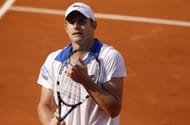
Clay and Roger Federer were Andy Roddick's banes. The American, who had the fastest serve that the game had ever seen, seemed incapable of deciphering either of them.
At the French Open, Roddick’s best result came in 2009, when he reached the fourth round - where he went down to Gael Monfils in straight sets. A baseliner who could impart a lot of power to his groundstrokes, Roddick’s dismal record at the French Open comes as a surprise.
Roddick’s entire career was spent in the shadow of Federer. Roddick had been World No. 1 for 13 weeks before it was snatched from him by the Swiss maestro in February 2004, who would be dislodged from the apex only after four years.
Roddick’s only success at a Grand Slam event came in 2003, when he won the US Open. He made it to the final of Wimbledon thrice, defeated by Federer on each occasion. At the Australian Open, he was a four-time semi-finalist.
His record at the French Open seems worse when seen against the light of his superior records at other Grand Slam events.
#9 Lleyton Hewitt (Australia)
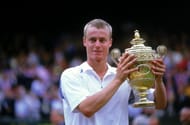
The youngest World No. 1 in the history of the ATP rankings, Lleyton Hewitt is a streetfighter like no other. He isn't the most attractive player on court, but Hewitt can stir the senses of even the stone-hearted with his perseverance.
Hewitt was 20 years and 268 days old when he became the World No. 1 in 2001, a position to which he had ascended owing largely to his victory at the US Open that year. He followed his success at the US Open with a triumphant run at Wimbledon the following year.
Success at Roland Garros, however, remained unattainable. In 2001 and 2004, he made it to the quarterfinal of the event. While Juan Carlos Ferrero got the better of him in 2001, it was David Nalbandian that he went down to in 2004.
Hewitt’s failure at the French Open is rather hard to fathom since the surface suited his style of play, which largely revolved around dictating from the baseline.
#8 Marat Safin (Russia)
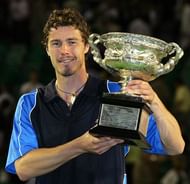
The highly temperamental Marat Safin could, on the days when he woke up on the right side of the bed, make Pete Sampras look pedestrian. And such days were to be treasured since they were rare occurences. Safin was immensely talented, but was also cursed with a fragile disposition that often brought about his downfall.
In 2000, when he took out Pete Sampras in the US Open final in straight sets as a 20-year-old, he was touted as the next superstar in tennis. Sampras himself remained convinced that Safin was earmarked for greater feats. However, when Safin retired nine years later, he had added just the one other Major (Australian Open 2005) to his name, a number far below what had been expected of him.
Safin achieved his best result on the Parisian dust in 2002, when seeded second, he reached the semifinal - only to be shown the door by 11th seeded Juan Carlos Ferrero.
By his own admission, Safin preferred the clay of Paris to the grass in Wimbledon. But the Russian failed to triumph at Roland Garros, despite having enjoyed success at the venue against claycourt specialists such as Gustavo Kuerten.
Although Safin retired with two Grand Slam titles against his name, as well as the distinction of being the only Russian ever to have won the US Open, his fans couldn’t help but feel that his career had remained unfulfilled.
#7 Stefan Edberg (Sweden)
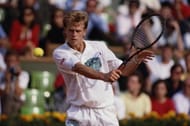
A simpler service action than Stefan Edberg’s would be inexplicably hard to find. A more elegant one, near impossible. Edberg, the master serve-and-volleyer, delighted fans for more than a decade with his effortless brand of tennis. But the French Open title is conspicuous by its absence in his trophy cabinet.
In 1989, Edberg, who generally looked at the French Open as preparation ground for Wimbledon, reached the final and was pitted against 17-year-old Michael Chang. And, as expected, Edberg was the overwhelming favourite to clinch the match.
Despite his tender years, Chang had proved his worth, having taken out reigning World No. 1 and defending champion Ivan Lendl en route to the final. However, he remained the proverbial underdog in the summit clash.
The final went down to the wire, with the spectators on tenterhooks for the entire duration as the momentum swung with such rapidity as to put a pendulum to shame. But Edberg finally lost 1-6, 6-3, 6-4, 4-6, 2-6 to give Chang the only Grand Slam title of his career.
Edberg was, however, successful at the other Grand Slam events, winning the Wimbledon, Australian Open and the US Open twice each.
#6 Patrick Rafter (Australia)
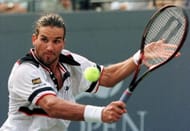
Pat Rafter was World No. 1 for all of one week before it was snatched by the man who strode the world of tennis like a veritable titan throughout the 1990s: Pete Sampras. However, the two-time Grand Slam Champion was widely acknowledged as one of the most talented players on the circuit; when it came to volleying, he was second only to Pete Sampras among his contemporaries.
For a serve-and-volley player, it is ironic that Rafter got his ticket to fame at the French Open, where he reached his maiden Grand Slam semifinal in 1997, losing to Sergi Bruguera. Rafter was unseeded heading into the 1997 French Open and in the third round, he caused a massive upset when he took out then reigning Wimbledon champion Richard Krajicek in four sets.
He failed to emulate that claycourt success in the coming years. But Grand Slam glory awaited him at the US Open later in 1997, when, against all expectations, he beat Greg Rusedski in a four-set final to win the first of his two US Open titles. The following year, he successfully defended the crown, beating compatriot Mark Phillipoussis in the final.
Rafter also made it to the final of Wimbledon twice, in 2000 and 2001, losing to Sampras and Ivanisevic respectively. His title clash at Wimbledon against Goran Ivanisevic in 2001 is considered one of the best championship matches ever.
#5 Jimmy Connors (United States of America)
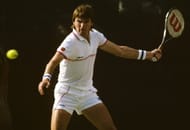
In tennis, Jimmy Connors is synonymous with longevity. It is one thing to extend your career well into your 40s, but entirely another to remain successful at that age. Connors will forever be remembered for his undying competitive spirit, which saw him win a record 109 ATP titles.
Connors occupied the top ranking for a mind-boggling 268 weeks and won eight Grand Slam titles, tasting most success at the US Open - an event which he won five times. However, for the entire length of his 24-year long career, success at the French Open eluded him.
Connors made it to the semifinals of the French Open five times, the last occasion being in 1985, when he was 32 years old. However, the Parisian dust, which seems to possess an inveterate tendency that brings about the fall of champions, thwarted him on all five occasions.
#4 John Newcombe (Australia)
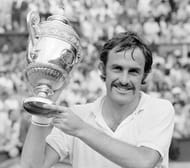
John Newcombe was among the most prominent stars of the early Open Era. A natural athlete, Newcombe was a highly successful player in both the singles and the doubles circuit, attaining the top ranking in both.
Along with Rod Laver and Ken Rosewall, Newcombe ushered in an era of Australian domination in men’s tennis. He and Laver are the only players to have won the US Open both as amateurs and professionals.
Although he enjoyed success at the French Open in the doubles, winning three titles, Newcombe failed to progress beyond the quarterfinal round in the singles – a feat he achieved on two occasions.
He ascended to the top of the ATP rankings in June 1974.
#3 Boris Becker (Germany)
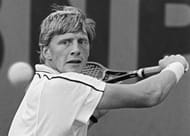
When Boris Becker lifted the Wimbledon title in 1985 as a 17-year-old unseeded player, the world was well and truly his oyster. With a game that was a blend of agility and powerful shot-making, Becker brought a new brand of dynamism to tennis. However, all these attributes couldn’t yield him a French Open title.
Becker’s game, centred around big serves and winners, turned out to be his biggest handicap on the clay of Roland Garros. An aggressive player, who preferred to dictate proceedings in rallies, he seemed averse to the idea of playing long rallies and waiting for the opponent to make a mistake.
His failure to win the French Open didn’t seem to stop the fans in Paris from falling in love with his athletic approach to the game though. Even those patrons of the game who preferred to watch players indulging in a battle of attrition on clay, couldn’t help but get enraptured by the sight of Becker diving in front of the net as he fired a volley like only he could.
In all, Becker went on to win six Grand Slam titles which included three titles at Wimbledon. He won the US Open once and the Australian Open twice.
#2 John McEnroe (United States of America)
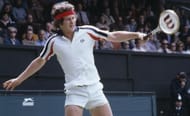
John McEnroe will go down as the most fascinating, and probably the most enigmatic character that tennis has ever seen.
The fiery American, who was as renowned for his prowess with the racquet as he was for his tirades against the referees, came within kissing distance of winning the French Open in 1984, when he lost in the final to Ivan Lendl.
That match was a gruelling five-setter that witnessed Lendl stage one of the most dramatic comebacks in tennis history, coming back from two sets down to clinch his first ever Grand Slam title. Lendl would then go on to win two more titles at Roland Garros.
Lendl beat McEnroe 3-6, 2-6, 6-4, 7-5, 7-5 to put paid to the American's dreams of winning on his least favourite surface. The match marked the rise of a new star in tennis, while also signalling the beginning of the end of McEnroe’s domination in the sport.
McEnroe did recover from this loss to win a third Wimbledon title later that year, but that was to be his last Grand Slam. He occupied the top position in the ATP rankings for a whopping 170 weeks, but failed to win two Grand Slam events: one was, of course the French Open and the other was the Australian Open, where he never made it beyond the semifinal stage.
#1 Pete Sampras (United States of America)
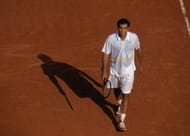
Russian former World No. 1 Yevgeny Kafelnikov brought Pete Sampras to the brink of tears in 1996, tearing Sampras apart in the only French Open semifinal that the American reached.
Sampras had to endure the ignominy of being handed a bagel in the second set as he went down to Kafelnikov 6-7 (4), 0-6, 2-6 in 1996. The Russian went on to win the title that year.
Still, Sampras' appearance in a French Open semifinal was an enormous feat in itself given his lack of affinity for clay.
On the fast-paced grass courts, few could hold a candle to Sampras. Between 1993 and 2000, when Sampras ruled literally unchallenged at Wimbledon, his only loss at the event came against Richard Krajicek in the quarterfinals in 1996.
Clay, however, did not suit the man who relied primarily on his booming serve and his finesse game at the net to win matches. Although his baseline game was nothing short of extraordinary, clay demanded a special set of skills, that Sampras clearly seemed to lack.
However, it would be uncharitable to state that Sampras’s record at Roland Garros was downright abysmal. For three years in a row from 1992-95, the 14-time Grand Slam champion made it to the quarterfinals of the event.
However, in failing to win the French Open, Sampras was unable to accomplish a Career Grand Slam.
